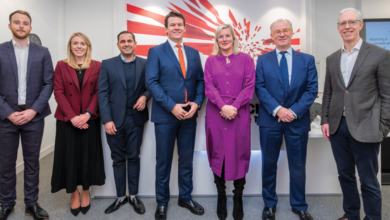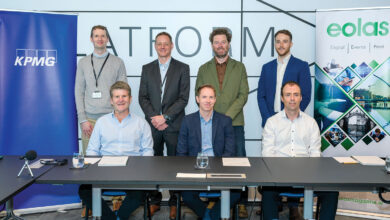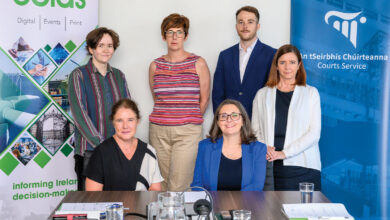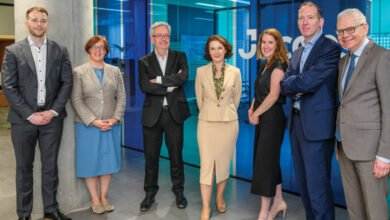Decarbonisation: The role of renewable gas
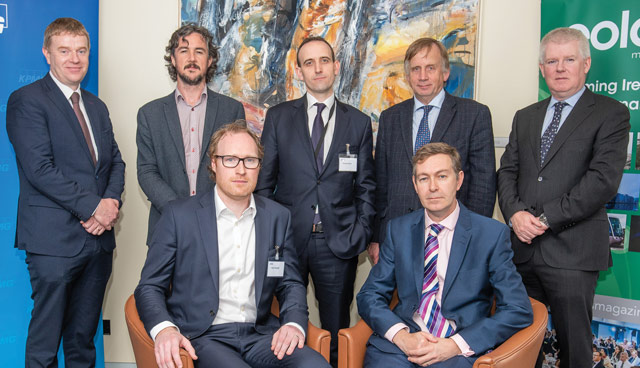
KPMG hosted a round table discussion with key stakeholders on utilising renewable gas to address Ireland’s decarbonisation challenges.

Do renewable gases (including biomethane and hydrogen) have a meaningful role to play in Ireland’s decarbonisation ambitions (including residential heating, transport and the agri-sector)?
Kevin Fitzduff
Renewable gas has a key role to play in meeting our targets, specifically in the areas of transport and heating. It offers a huge amount of flexibility through a natural storage capacity within the gas grid and also allows flexibility for government to be able to allocate that energy to targets that it needs to meet. So, it can allocate it towards transport, or heating, or if it wants to, it can allocate it towards the electricity targets using combined cycle gas turbines (CCGT), which are much more efficient than generating small scale projects onsite.
Jim Scheer
Renewable gases from sustainable sources likely have a role to play in Ireland’s decarbonisation. Modelling efforts looking to 2050 of different energy systems, at the national level and the European level, when geared towards meeting our long-term climate aims, tend to have common trends in relation to energy efficiency such as the retrofitting of buildings, improvements of industrial processes, a shift to low carbon transport and electrification of the private fleet. These efficiencies are coupled with a supply side that maximises the use of renewables, including renewable gas and electrification. Carbon neutral green hydrogen for long-term storage also has a potential role to play. While I’m positive about the long-term future for renewable gases, there are also some important decision points and questions that we need to answer before we pull the trigger on large scale investment in the sector.
Russell Smyth
The answer to decarbonisation is not found in any single technology or option. Undoubtedly, renewable gases need to be part of any solution mix. Through our work we have identified areas where renewable gases are not the solution but also areas where it is the optimum. The challenge Ireland now has is recognising how to best utilise renewable gases.
JJ Lenehan
Renewable gases have a role to play but we’re not utilising our resources to the full. Ireland’s agricultural area is 90 per cent grassland, something which is unique in Europe. A large proportion of the grassland area could be managed to produce more grass – and this is being demonstrated in practice by the Teagasc GRASS10 programme. The potential to produce grass as a biogas feedstock is not being utilised because there is no incentive for farmers to produce optimum quantities of grass. We assisted in an SEAI study in 2017 which outlined that over 25 per cent of Ireland’s natural gas needs could be met by utilising surplus grass silage produced on farms as a biogas feedstock. That doesn’t involve reducing meat or milk output, it’s from the ‘hidden hectares’. Currently average production is around seven tonnes of grass dry matter per hectare per year but that can be increased to 12 tonnes through an incentive for the farmer to manage it better and a market for them to make a return.
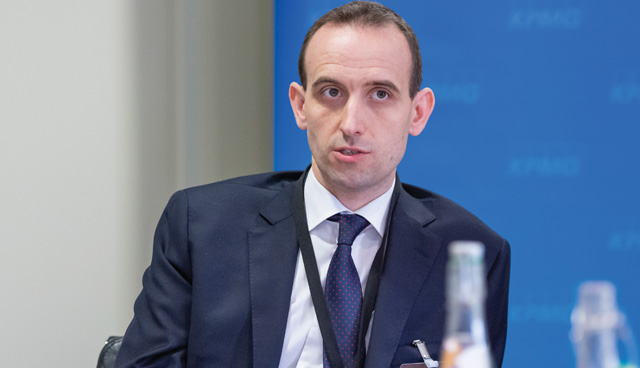
Peter Baillie
Renewable gas has a big role to play in the decarbonisation of heat and transport and to date it is a largely untapped resource. There is a network to be tapped into through gas injection points, which we’ve seen in GB through a gas injection tariff, that can be very successful in bringing forward anaerobic digestion (AD) projects. We need to look not just at the agriculture sector but at the circular economy and getting gas from waste and linking that into a network which gives flexibility to how gas is used in achieving 2030 targets for heat and transport.
Denis O’Sullivan
Ireland is lagging way behind all other European countries in terms of developing renewable gas industries and yet several reports have been generated which suggest Ireland is top of the pile in terms of potential, particularly in the agriculture sector. In 2018, over half of Ireland’s electricity was produced from natural gas and all credible models out to 2050 foresee the continued use of gas in our energy requirements, including electricity generation. So, there is an imperative to decarbonise our gas network and find alternatives. Initially, that is going to be made up of the introduction of biomethanes from the agri sector but also from the waste management sector and I think in due course we will see the introduction of hydrogen, along with carbon capture and storage. We will only meet both our 2030 targets and our 2050 targets with a renewable gas offering.
How do plans for the decarbonisation of the existing gas network sit alongside electrification options?
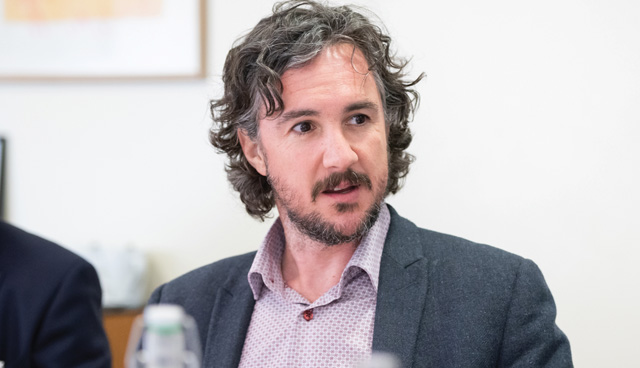
Jim Scheer
I think the final solution will come from multiple pathways. There are existing no-regret options around decarbonisation, based on evidence that efficiency is the least-cost way to reduce emissions. We know we are lagging behind on renewable heat and while we have done well getting renewables on to the electricity grid, we still have huge potential in off-shore with solar PV. At the same time, the potential of the bio economy needs to be considered in parallel. I wouldn’t be as bullish as JJ in relation to grass, given the potential for unintended consequences but certainly waste streams appear to stack up on carbon grounds and economic potential. I think we must continue to assess and learn in multiple areas before any long-term plays.
JJ Lenehan
Ireland is a grass-based country. Our milk and meat is produced from grass and we make a big play of how sustainable that is. While producing more grass is a challenge it is envisaged that we can do this in an environmentally sustainable way e.g. by optimising the use of digestate to replace conventional fertiliser. The 2017 SEAI study highlighted that potential biogas production in 2035 from waste was just over 4 per cent compared to 22 per cent from grass silage. If you really want a step change in biogas/biomethane production in Ireland, you must look at agri-based crops. We’re the only country in Europe with spare capacity to produce grass, for whatever use, and it’s a unique opportunity.
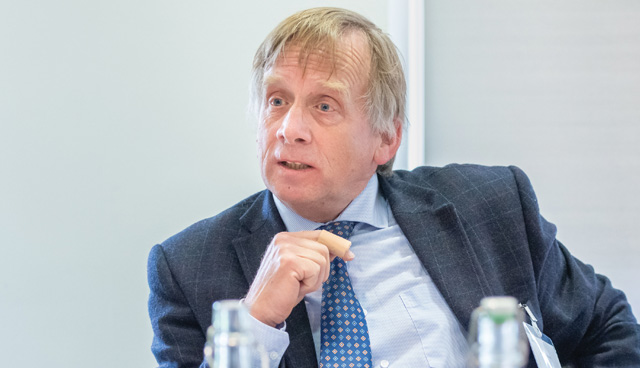
Peter Baillie
The challenge of decarbonisation is so big that there is a role for renewable gas from various sources. Looking specifically at domestic heat, the estimated cost of circa €50,000 to retrofit a house means that the electrification route for domestic properties isn’t going to be cost-effective. We could use renewable gas to heat homes, through the existing network, which has capacity for extension. Hydrogen has a role to play when considering the electrification of vehicles, especially those larger vehicles that electric batteries are unable to service. Renewable gas must come from multiple sources but it’s important that the right support mechanisms are targeted at areas that deliver the biggest benefits at the least cost and not spread too thinly.
Denis O’Sullivan
In transport, electrification is the obvious means of decarbonisation for the private fleet and biomethane appears the most logical approach to heavier vehicles, with a future role for hydrogen. In domestic heating, the cost of deep retrofitting the existing housing stock has become unviable and better alternatives exist. We have circa 700,000 customers on the gas network and switching those to biomethane requires no modification of downstream networks and no modification of those premises. We have made great strides in wind energy but there is more potential in this area and it is not a total solution when considering the variability of supply. Battery storage alone won’t be sufficient to solve this problem. However, it’s worth noting that the gas network itself is a significant supply and the pipework we currently have in the ground can give approximately two days of gas supply to the country. That’s better than any battery technology anywhere else in the world right now in terms of capacity. I believe there is little or no further research required. It is already done and it is extensive. We’re at a point where decisions need to be made about the future direction.
Russell Smyth
KPMG has undertaken two reports recently, one in the GB market and one in the Irish market around the decarbonisation of domestic heating. With domestic heating accounting for 50 per cent of the thermal demand within Ireland and 10 per cent of all GHG emissions, it is a meaningful contributor and deserving of attention. When we looked at the options available for decarbonisation, unsurprisingly, the answer came back that there is not one solution for all situations and secondly, that all options are expensive. From our analysis it is clear that there has to be differentiation between existing and new housing stock. If you can get the energy efficiency of new build houses to the right level, electrification certainty looks compelling. The challenge however is that retrofitting existing stock to the required standard is very expensive, and as such we found that utilising green gas within the existing gas network is a significantly more economical alternative for existing homes close to the gas network.
Kevin Fitzduff
There is a perception that on-shore wind energy is the cheapest option towards decarbonisation but analysis we carried out on carbon savings through AD on different feedstocks shows that the savings of reducing a tonne of carbon is actually higher than wind energy. The problem is that it’s a more complicated system and savings made through proper disposal of waste or putting nutrients back into the ground often aren’t recognised. I think policy makers need to take a holistic view and not make policy based solely on putting kilowatts on to the grid.
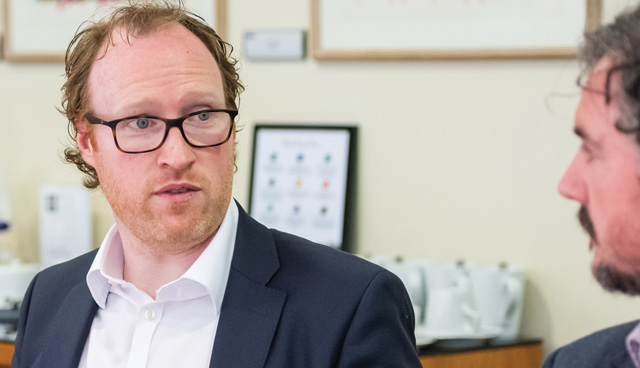
What are the key challenges in adopting low carbon gases and how do we address them?
Jim Scheer
We need some independent lifecycle assessment based on the data, to be sure about a full lifecycle cost assessment and to be sure about the emissions game here. I totally accept that deep retrofitting is expensive, but I don’t believe it’s unviable, nor do I think electrification is unviable. Installing units of renewable electricity on the grid is cheaper than biomethane at the moment. I’m not suggesting that we should rule any of this out, but I don’t see the hard evidence yet that we should be certain about ploughing ahead with going beyond waste and using high levels of silage, which creates other issues that need to be dealt with before we go headlong into it.
Peter Baillie
It’s clear from current support mechanisms that producing electricity from AD is relatively expensive and therefore it cannot compete in the Electricity Support Scheme environment, which is why we are arguing for a gas injection tariff. It’s not just about the cost per electron, biomethane can provide solutions for renewable heat and renewable transport and it can provide circular economy solutions with waste. The current support mechanism focuses solely on the cost per electron produced and that is never going to deliver change. There is a challenge there in terms of how that is funded and scale – a large number of small scale AD projects will cost more than a small number of large scale ones – but to do larger scale you need feedstock agreements and they need to come from credit-worthy parties. There’s a small number of those in the waste sector and there is a multiplicity of other suppliers who aren’t credit-worthy. For investment to be attracted into the biomethane sector, there has to be something that attracts investors.
JJ Lenehan
Historically there was a grass drying industry in Ireland. In the 1950s and ‘60s, there were a number of major grass drying companies assembling grass from up to 400 hectares each to produce animal protein. We were able to assemble these quantities of grass at an industrial scale when technology was much less developed. We’re not going to start off with the optimum system to produce grass for a feedstock for biogas/biomethane, but we could kickstart it with incentives and evolve the industry. If we produce 25 per cent more grass and use it for energy, there is an increase in business opportunities for farmers, AD facility providers, AD plant operators and managers and other associated services. I think it’s a limitation to not include possibilities like this in economic evaluations. Also, if you are using grass as your feedstock you can look at other opportunities e.g. extracting proteins before the AD process. Assembling suitable quantities of grass as an AD feedstock could become the enabler of other such “circular bio-economy” developments.
Denis O’Sullivan
Ireland generally farms at a smaller scale, which lends itself to smaller scale ADs, which are more expensive, but I do think there is a model out there. Like any renewable technology, the biggest challenge is providing the investment environment. There needs to be a support mechanism that gives comfort to show investors that an investment over a 15/20-year period will be a viable proposition. The huge advantages are that we have a lot of infrastructure and we don’t require significant investment downstream. We don’t need to focus on buy-in from the user in terms of renewable gas because there’s no change for them. More focus on grass is a challenge, but renewable gas from the waste sector is imminently viable. In the longer term there is a balance to be struck in the amount of grass and the amount of slurries that are there. What needs to be communicated to potential stakeholders is the advantages of operating a beef and dairy sector in tandem with a renewable energy sector and how well-linked they can be.
Russell Smyth
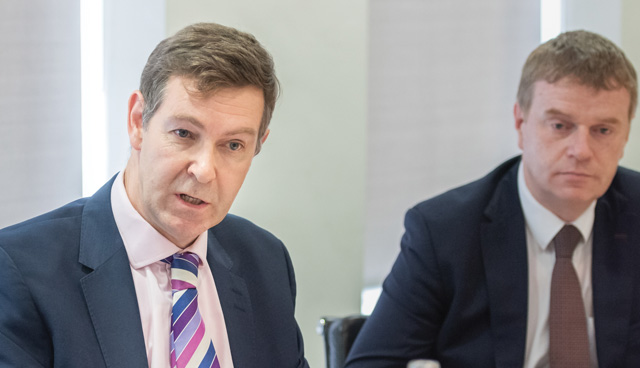
he key challenge. Using waste materials is optimum from a greenhouse gas perspective, but unless we utilise agri resources we’re never going to make a meaningful impact in the GHG targets. If you’re able to create the right ecosystem around grasslands, it creates an unbelievable number of positive benefits for Ireland such as stimulation of the rural economy, decarbonisation of the agri-sector, which accounts for one third of our GHG emissions, as well as increased indigenous energy security.
How could/should the transition to low carbon gas, and a low carbon economy more generally, be funded?
Peter Baillie
We can see the model in the UK. A gas injection tariff is a way to underpin efficient investments. How that is set is important; it needs to be cost efficient and sustainable, not only to 2030, but to 2050, as our goal is full decarbonisation. We need to consider what the costs are going to be if we don’t do this, with greenhouse gas emissions and potential fines for not lessening them. It will pay for itself over time as we wean ourselves off imported fuels and become sustainable long-term.
Kevin Fitzduff
One question here is what should the support structure look like? The bigger question is: how is that support structure funded? We’re having a conversation about it being funded from the Exchequer, I think that’s a very difficult conversation to have. We have already seen on the electricity side, the PSO method that has worked well and been accepted by the public as a mechanism by which to pay for renewable energy. We need to look at something similar for biogas that ringfences funding for these projects, whether that’s a tariff on fossil fuels or a carbon tax can be debated, but there needs to be ringfencing, otherwise it’s going to be very difficult.
Jim Scheer
It’s premature to talk about gas injection tariffs when there are issues to iron out such as the scale of farms trending towards smaller AD. It might, for example, be more economically advantageous to skip the grid injection bit; we don’t know if that’s the best option yet. Before we talk about government tariffs for supporting a large-scale industry, let’s bring it back to that carbon lifecycle feedstock issue: we need to ensure we don’t increase that one third of all emissions by promoting the sector, leading to more animals and longer slurry storage. If we are to choose a pathway, there are international examples where gas grids are decommissioned, and they use variable renewable electricity sources to generate green hydrogen for long term storage. The gas network is there but that will take maintenance and that will cost. When those extra prices are taken into account, that can change our economic solutions.
JJ Lenehan
In terms of animal numbers, there were higher cattle numbers in Ireland 20 years ago – approximately 1,000,000 head or 10 per cent more. While dairy cow numbers have increased following the abolition of quotas, the trend is for a decrease in suckler cow numbers because of poorer economic returns. The EU Support Scheme keeps beef farmers in business while ensuring EU consumers have access to sustainably produced food at reasonable prices. The reason farmers don’t use more grass to produce more beef cattle is because they are not making an economic return. Beef farming in many cases is more a part-time enterprise with the average farm size in Ireland being 32 hectares. Dairy cow numbers will go up, but there are limitations on organic nitrogen levels which will control livestock numbers per unit area. With grass for AD, you could actually see beef farmers depopulating animals if there was an economic return, which would create a double benefit with enteric methane production from cattle being removed from the system. The EU Support Scheme is being reviewed and increasingly that’s going to be geared towards environmental sustainability. We’re in an interesting space where farmers could drop animal numbers and use their grassland for other uses.
Denis O’Sullivan
Without question a support mechanism is required. It won’t be too dissimilar to what we’ve seen with other technologies, particularly wind, where a tariff is required in order to get momentum into the industry. There are other options to look at once the industry becomes established, be that an obligation scheme or some other mechanism. I don’t believe long-term Exchequer subvention of any scheme is viable. The appropriate mechanism today may not be the appropriate one in 10 years’ time and we need to be flexible, but certainty still needs to be given to investors.
Russell Smyth
The broader question has to be: is Ireland ready to accept the upfront economic costs of moving towards a fully decarbonised society? This debate is going to come up for biomethane tariffs and every other support mechanism for decarbonisation. Our politicians need to reach a consensus and provide society with the rationale and arguments on the long-term economic and societal requirements of moving towards a fully decarbonised society
Jim Scheer
I don’t understand how that’s still a question. We’re in a climate crisis here. I have some concerns about the gas question that I’ve raised today. I’d like to see it work, but only if it stacks up on the carbon equation. The overall question of if we need to decarbonise and accept the economic consequences is long gone. If we don’t do it, we’re doomed, it’s not a choice.
What needs to be done to take this forward? What should policy makers focus on?
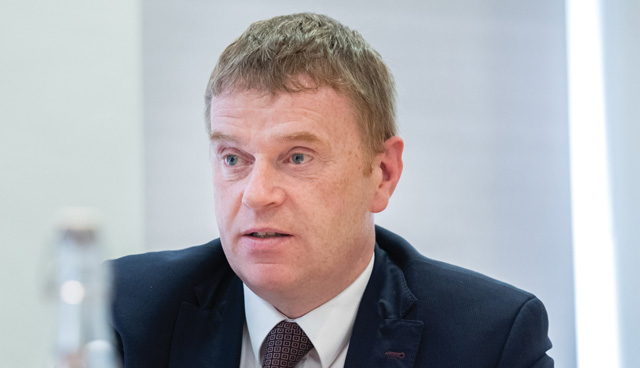
Denis O’Sullivan
The ask of policy makers is to look at the cost benefit of mitigating CO2 emissions for each of the sectors we are discussing. On the heating one, for example, dividing the domestic bills into existing housing stock and new developments and doing the exercise of cost benefit to give some clear indicators to the industry as to how to progress.
Peter Baillie
I think we need to look for the quick wins. In the waste sector there is scope to do more, which won’t happen without a gas injection tariff. One other thing that we need to bear in mind is that the digestate from source separated organics or commercial food waste that comes from these plants needs to continue to be able to be spread on land, and that this route isn’t closed off through other regulations.
JJ Lenehan
Teagasc as an organisation traditionally underpinned the knowledge for crop and animal production but maybe it’s time to look at a scenario where the amount of suckler cows is reduced and grassland is being used for other uses such as biomethane or indeed for feedstocks for the wider bio economy opportunities. No other country in Europe grows the tonnage and quality of grass per hectare that we grow and it’s a unique opportunity.
Russell Smyth
We need a joined-up policy position on this. For example, if we decide that AD and biogas is the right thing, we’ll never get these plants built without a supportive planning policy. We need a lot of policy decisions to come together to create a long-term sustainable solution.
Jim Scheer
We still haven’t unlocked efficiency and got district heating going as well as we need to, we’re still burning coal and peat for electricity generation, and there’s still huge unlocked potential in offshore renewables and solar PV. These are all no regrets policies that need to happen now as a priority. The no regrets policies on the renewable gas side need to be implemented also. We need to give ourselves assurances on uncertainties around animal numbers and net carbon budget and then proceed if the optional weighs up on those grounds.
Kevin Fitzduff
We would like to see a tariff put in place sooner rather than later. We’ve been having this debate for a number of years and it doesn’t seem to have moved. You can implement a tariff now that is flexible like the UK have, that digresses if needed and increases if needed. It might start slightly too low or it may start slightly too high, but we need to start now.
The Participants
Peter Baillie
 Peter is Managing Director of Energia Renewables, which holds a 21 per cent renewable market share in Ireland. He is leading the development and construction of Energia’s first Bioenergy project, 4.8MW, €50 million investment in Huntstown Bioenergy Limited in Dublin, with an annual feedstock capacity of up 100,000 tonnes of MSW fines and SSO waste.
Peter is Managing Director of Energia Renewables, which holds a 21 per cent renewable market share in Ireland. He is leading the development and construction of Energia’s first Bioenergy project, 4.8MW, €50 million investment in Huntstown Bioenergy Limited in Dublin, with an annual feedstock capacity of up 100,000 tonnes of MSW fines and SSO waste.
Kevin Fitzduff
 Kevin is Managing Director of Stream BioEnergy. Kevin has 20 years’ experience in the renewable energy industry and is an engineering graduate and an MBA from the UCD Smurfit Business School. He spent five years working for ESB International project managing the construction of wind farms in Ireland and subsequently joined Trinergy, a renewable energy company that developed and acquired onshore wind energy businesses throughout Europe. In 2009 Kevin left Trinergy to form Stream BioEnergy (SBE) and has extensive experience of commercial evaluation and financial modelling of projects. As part of the team in SBE Kevin has led the development of both agricultural and industrial anaerobic digestion plants in Ireland and the UK.
Kevin is Managing Director of Stream BioEnergy. Kevin has 20 years’ experience in the renewable energy industry and is an engineering graduate and an MBA from the UCD Smurfit Business School. He spent five years working for ESB International project managing the construction of wind farms in Ireland and subsequently joined Trinergy, a renewable energy company that developed and acquired onshore wind energy businesses throughout Europe. In 2009 Kevin left Trinergy to form Stream BioEnergy (SBE) and has extensive experience of commercial evaluation and financial modelling of projects. As part of the team in SBE Kevin has led the development of both agricultural and industrial anaerobic digestion plants in Ireland and the UK.
JJ Lenehan
 JJ Lenehan is a Building Officer with Teagasc and looks after property related issues at the 55 locations the organisation operates from. He is an Engineer by profession and has a special interest in energy use in Teagasc. The Built Environment accounts for the largest proportion of energy use in the organisation at 74 per cent of the total consumed and Teagasc has a goal to surpass the 2020 EU targets for renewable energy use. Currently Teagasc are installing a Biogas plant at Grange which will produce 70m3/hr of biogas. The feed stocks to be used are grass silage and slurry.
JJ Lenehan is a Building Officer with Teagasc and looks after property related issues at the 55 locations the organisation operates from. He is an Engineer by profession and has a special interest in energy use in Teagasc. The Built Environment accounts for the largest proportion of energy use in the organisation at 74 per cent of the total consumed and Teagasc has a goal to surpass the 2020 EU targets for renewable energy use. Currently Teagasc are installing a Biogas plant at Grange which will produce 70m3/hr of biogas. The feed stocks to be used are grass silage and slurry.
Denis O’Sullivan
D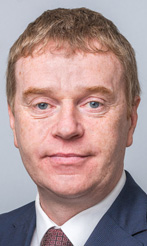 enis is Managing Director of Gas Networks Ireland. Previously Head of Commercial with the company, Denis had responsibility for managing, developing and delivering the business’s commercial growth and innovation strategies with key focus on maximising the utilisation of the gas network and diversifying its use with gas in transport and renewable gas. Prior to this, Denis worked with Bord Gáis Energy and Brookfield Renewable Energy Partners as Head of Development with responsibility for delivering one of Ireland’s largest wind energy portfolios. Denis holds an Engineering Degree and has over 20 years’ experience in development and management roles across the renewables energy and gas sectors.
enis is Managing Director of Gas Networks Ireland. Previously Head of Commercial with the company, Denis had responsibility for managing, developing and delivering the business’s commercial growth and innovation strategies with key focus on maximising the utilisation of the gas network and diversifying its use with gas in transport and renewable gas. Prior to this, Denis worked with Bord Gáis Energy and Brookfield Renewable Energy Partners as Head of Development with responsibility for delivering one of Ireland’s largest wind energy portfolios. Denis holds an Engineering Degree and has over 20 years’ experience in development and management roles across the renewables energy and gas sectors.
Jim Scheer
 Jim has over 17 years’ experience working in the field of policy analysis and development related to environmental issues. He is currently Head of the Policy Insights and Design at SEAI with responsibility for analytical, policy and statistics remits. He joined SEAI in 2007 and prior to that worked for the Government of South Australia. Jim holds a Professional Diploma from Smurfit Graduate Business School, an MSc. in Economic Policy Studies from Trinity College Dublin and a primary degree in Environmental Science from Flinders University (South Australia).
Jim has over 17 years’ experience working in the field of policy analysis and development related to environmental issues. He is currently Head of the Policy Insights and Design at SEAI with responsibility for analytical, policy and statistics remits. He joined SEAI in 2007 and prior to that worked for the Government of South Australia. Jim holds a Professional Diploma from Smurfit Graduate Business School, an MSc. in Economic Policy Studies from Trinity College Dublin and a primary degree in Environmental Science from Flinders University (South Australia).
Russell Smyth
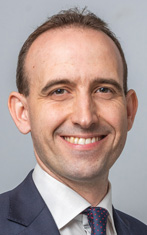 Russell is a Partner in KPMG Ireland and leads the firm’s corporate finance energy practice across the island of Ireland. He has over 15 years’ experience in energy related corporate finance transactions, including significant experience of developing and fundraising both farm-scale and commercial-scale biogas plants, as well as wider energy generation assets.
Russell is a Partner in KPMG Ireland and leads the firm’s corporate finance energy practice across the island of Ireland. He has over 15 years’ experience in energy related corporate finance transactions, including significant experience of developing and fundraising both farm-scale and commercial-scale biogas plants, as well as wider energy generation assets.


